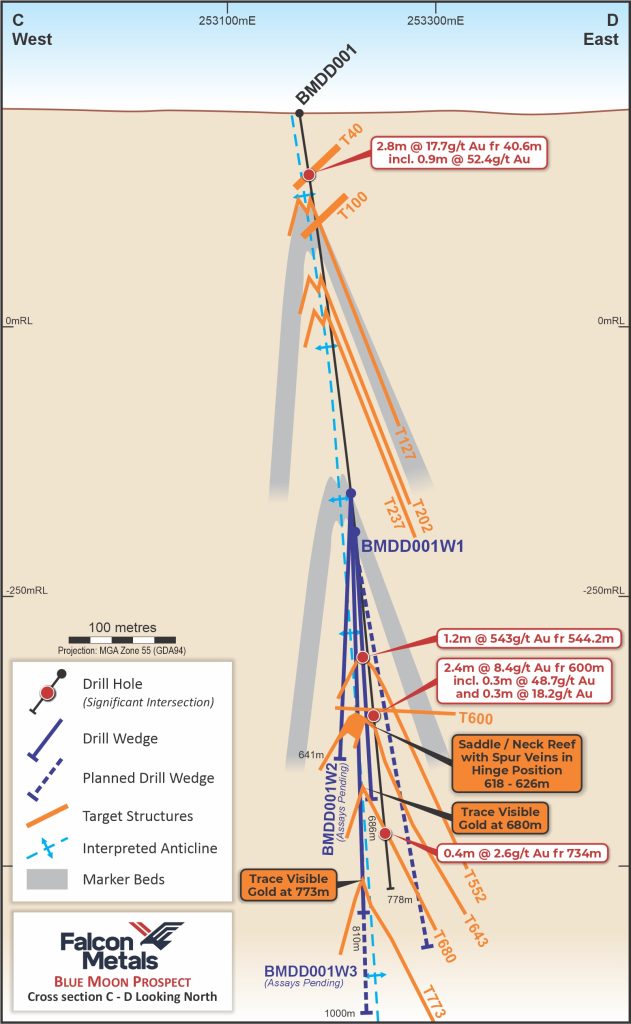Blue Moon is a prospect on the 100% owned licence EL007839. Falcon submitted an application for this permit when it came out of moratorium in December 2021. It is the exploration ground that surrounds the Bendigo mining permit (that remains in moratorium) which had historical production of 22 Moz of gold. Blue Moon is located 25km west from the Fosterville Gold Mine with the Swan Zone (2.3 Moz @ 49.6 g/t Au), owned by Agnico Eagle (NYSE: AEM).
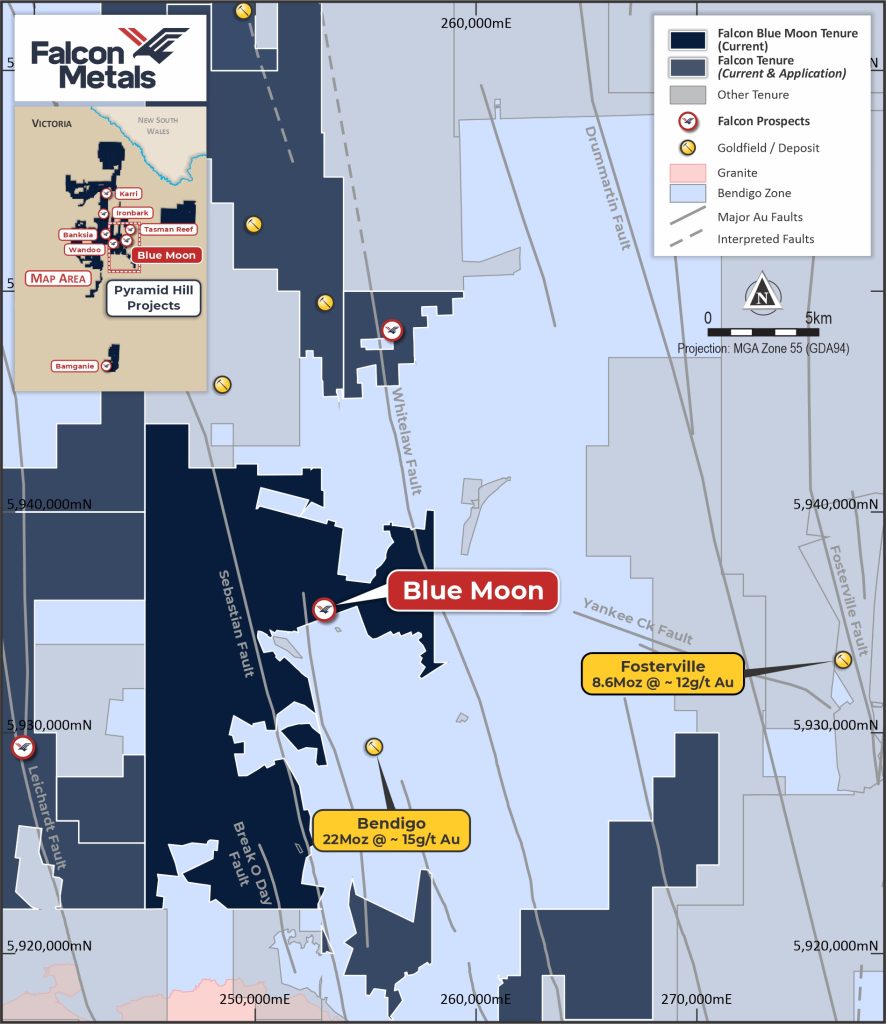
The 174km2 exploration licence was granted to Falcon for its initial 5-year term in mid-2023, and Falcon completed an initial program of low-impact aircore drilling on some regional reconnaissance targets in the 2023/2024 drill season. Since its initial granting, Falcon has undertaken an extensive review of all the historical information on the 22 Moz Bendigo Goldfield, with the Blue Moon target generated. It is the interpreted down plunge northern extension of the prolific Garden Gully anticline trend which produced 5.2 Moz @ 15 g/t Au over an 8km strike length . No modern exploration had previously been carried out at Blue Moon prior to Falcon’s activities.
Click on link below for 3D visualiation of Blue Moon:
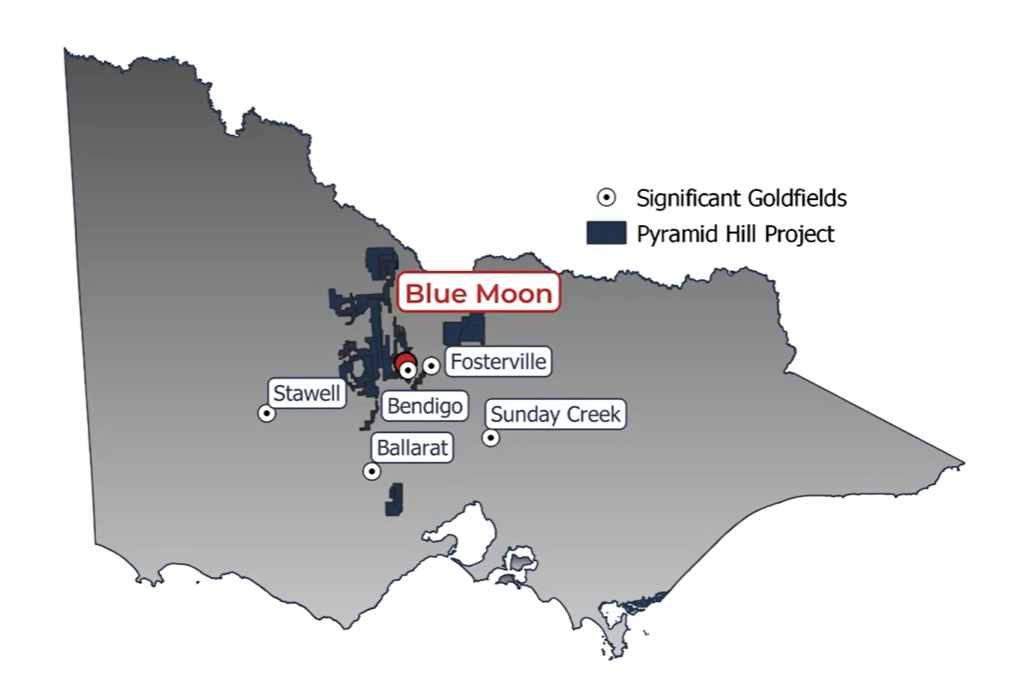
The Blue Moon Prospect, the northerly down-plunge extension of the Garden Gully anticline (~5.2Moz @ 15g/t Au), is a conceptual target that was developed from a 3D reconstruction of the Bendigo workings, historical reports and field mapping. Observations from Bendigo, Ballarat and Fosterville suggest that there is a strong plunge component to the high-grade mineralisation in Central Victoria which had not been adequately tested at the Blue Moon target area.
BMDD001, the parent hole, was designed as a stratigraphic hole to gather geological and structural information from the eastern limb of the Garden Gully anticline with the expectation of intersecting laminated quartz veins which are usually lateral to the main saddle reefs located within the anticlinal hinge, and to provide a vector to potential high-grade Bendigo style saddle/neck/leg reefs or faults/spur veins in the axial zone of the fold. See below for a schematic figure illustrating these styles of reef within the context of the Bendigo Goldfield.
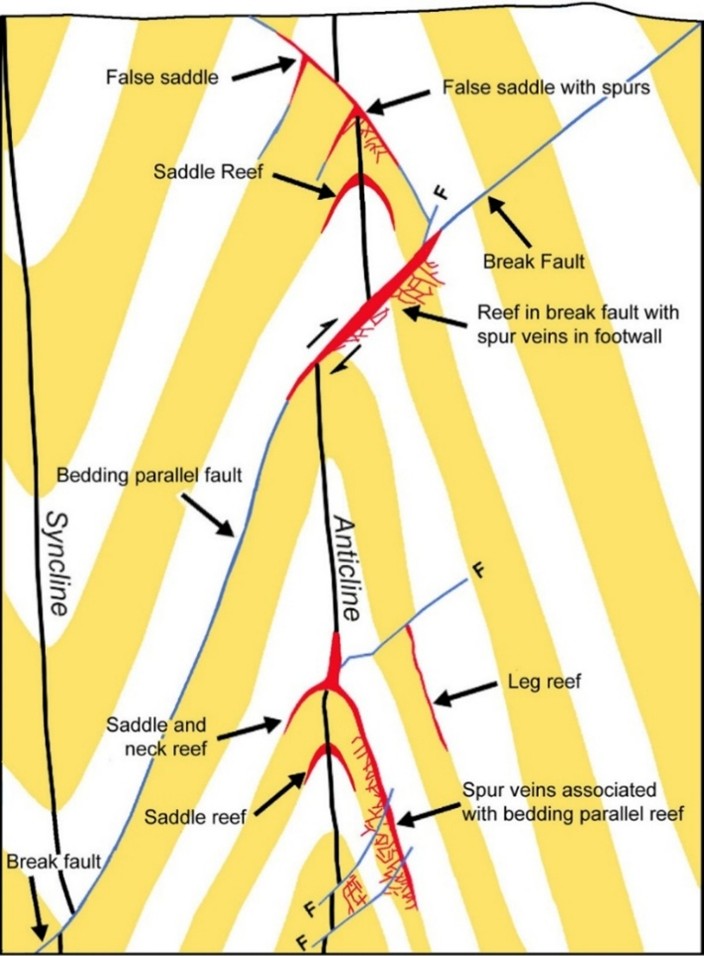
BMDD001 – Parent Hole
The parent hole successfully identified several mineralised structures with two high-grade zones , which were also intersected in the first wedge hole. The significant intercepts from BMDD001 from the full assay results are:
The upgraded zone at 40.6m is associated with a west dipping spur vein in a break fault in the east limb of the Garden Gully anticline . This is along strike from the historic North New Moon North Shaft, and it was encouraging to identify high-grade gold at this shallow depth. Prior to the drilling, it was assumed that any shallow zones of mineralisation would have been previously mined out, but this result suggests that opportunities for shallow high-grade gold remain within EL007839.
The zone at 600m was the conceptual target down plunge of the historic workings to the south of the tenement boundary.
BMDD001WI – First Wedge Hole
The first wedge hole, BMDD001W1, was targeting being closer to the Garden Gully fold hinge, which had not been intersected in the parent hole. This wedge drilled close to the hinge zone of the anticline but remained in the eastern fold limb, so did not test the optimal target position in the hinge zone itself. Visible gold was identified in a laminated quartz vein over a 1.2m downhole width in the up-dip position of target T552 , which was a bedding parallel vein that returned anomalous gold (<1 g/t Au) in BMDD001 . This wedge hole was approximately 6m west of the parent hole at this depth.
The significant intercepts from BMDD001W1 from the full assay results are:
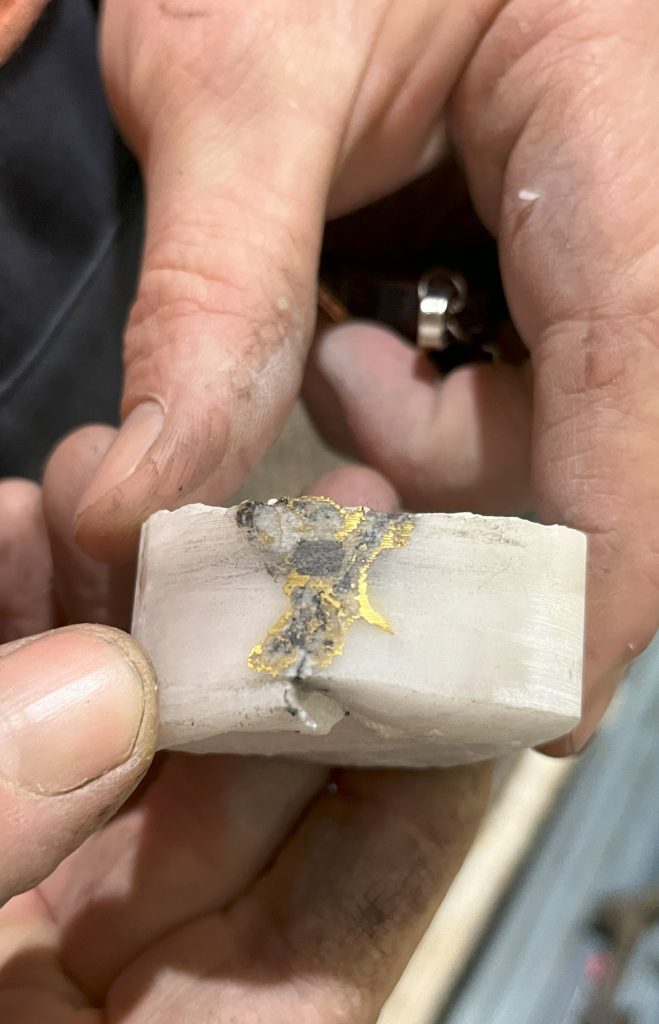
Wedge Holes with Assays Pending
The second wedge hole, BMDD001W2 was directed further west and successfully confirmed the position of the Garden Gully hinge at 489m. This hole continued trending further west down the western limb of the anticline. The target structures were tested in the western limb, with only minor veining observed compared to the previous holes. The western limb of the Garden Gully line in the northern end of the field is known to only have limited development of mineralised structures compared to the eastern limb, and is not considered a priority for drill testing. All assays for BMDD001W2 are pending.
BMDD001W3 is in progress and aims to drill as close to the hinge position for as long as possible. This hole has so far intersected visible gold in two veins, as well as intersecting, multiple quartz veins with sulphides. Trace visible gold was intersected in a west dipping laminated quartz vein from 679.9m to 680.5m, with arsenopyrite, pyrite and sphalerite on the selvage of the vein, and large coarse twinned arsenopyrite in the wall rock. Additionally, visible gold was also observed in a laminated quartz vein at 772.7m to 773.2m . A 7.6-metre zone of intense quartz vein development at 618.2m to 625.8m, close to previous high-grade results in the parent hole, may represent a saddle reef in the core of the fold hinge. Although no visible gold was present, this zone contained abundant arsenopyrite, pyrite and sphalerite. This hole is now planned to be extended to a depth of 1,000m, approaching the tenement boundary to the south.
Long section of significant intercepts from the parent hole and wedge holes
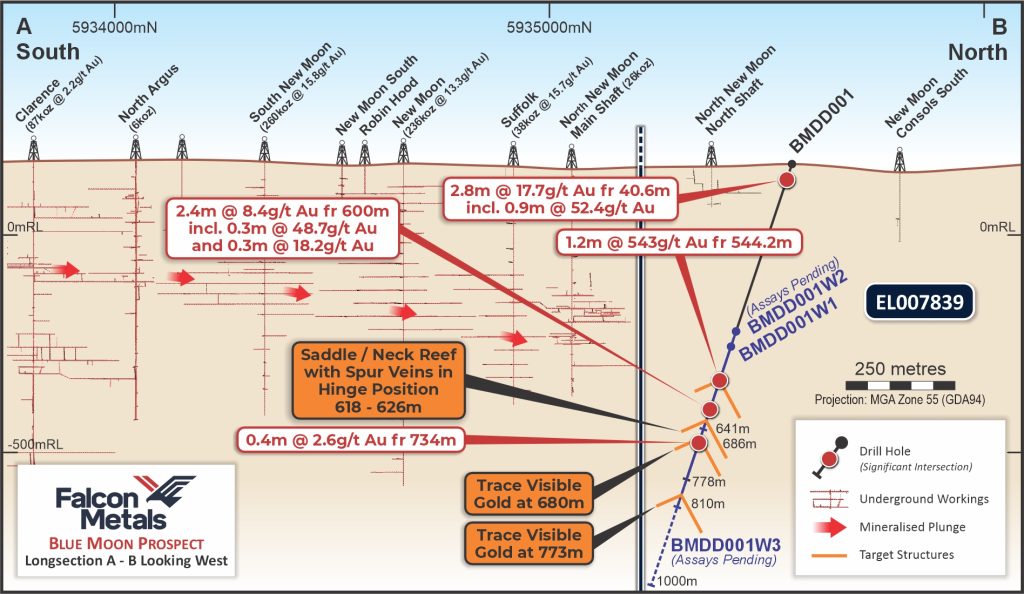
Cross section of BMDD001 and wedge holes
